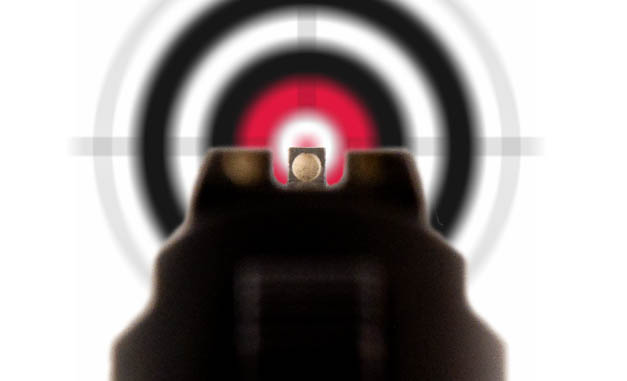
Sighting Your Gun
Aiming Your Gun, Also Known As Sighting Your Gun
Learning how to aim a gun is one of the most basic skills you will learn when you first acquire your firearm. Properly aiming the handgun is not only a basic part of its normal use, but it is also a vital part of basic firearm safety. If you find yourself defending your life with a firearm, aiming should be a higher priority than shooting. Whether you are using a revolver or a semi-automatic, learning how to aim a handgun is a critical skill and part of not only effective personal self-defense, but part of the enjoyment of shooting. Hitting the target is the target, it is the reason you own a firearm.
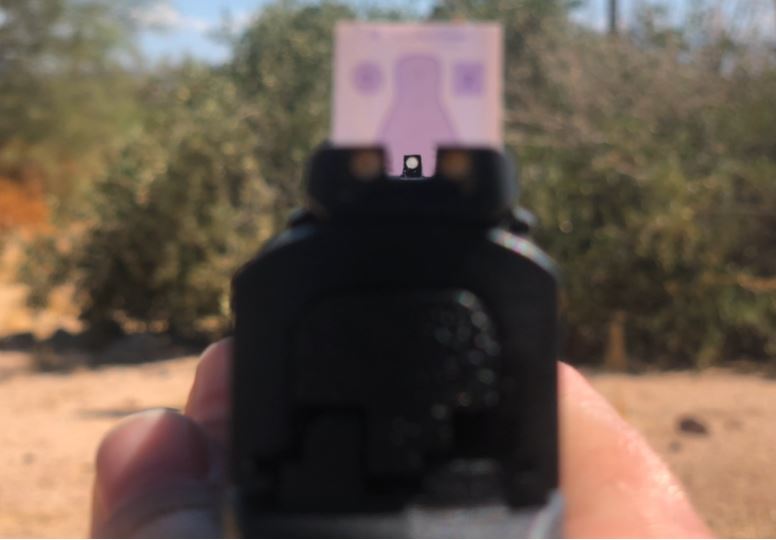
Still taken from Women & Guns: The Basics Online course. Click the image to find out how to enroll now!
The Sights And How To Use Them To Aim Your Gun
The sights are located on the top of the firearm barrel. The front sight should be centered in the notch of the rear sight and the top of the front sight should be level with the top of the rear sight.
There are many varieties of sights, but they all serve the same purpose of assisting you in the alignment of the barrel of your firearm with the exact spot you wish to hit. The front sight may be a blade or a dot located at the end of the muzzle and the rear sight may be a U shape, a V shape, two dots, a straight line, or a simple notch in the back edge just above the hammer on a revolver or at the back edge of the slide on a semi-automatic pistol. The type of your sights is less important than your ability to effectively line them up properly to hit your target.
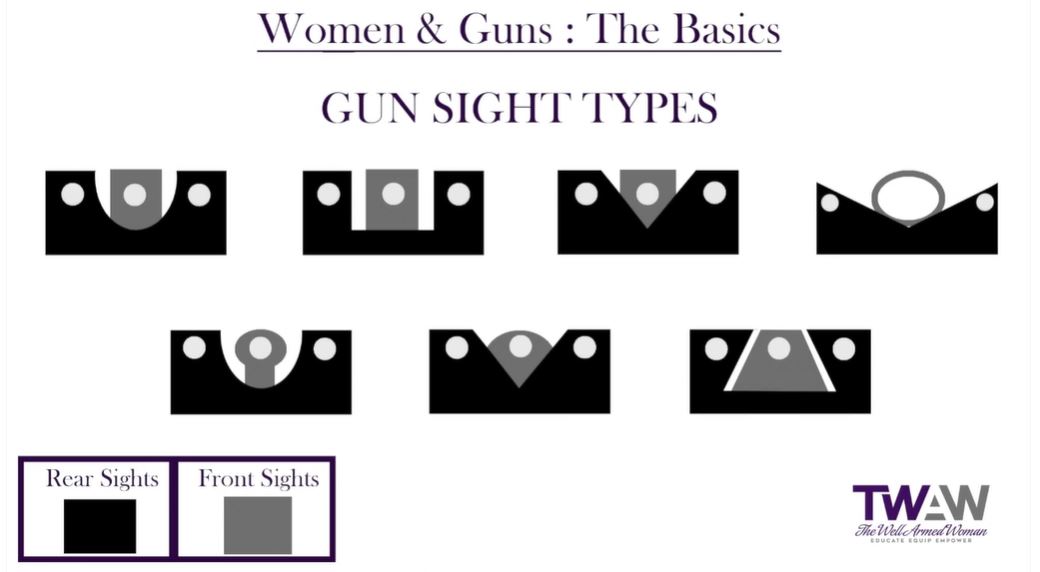
Still taken from Women & Guns: The Basics Online course. Click the image to find out how to enroll now!
No matter which variety your firearm has, the key skill is to keep your eyes focused on the front sight as it is set within or in alignment with the rear sight.
This means the target itself is slightly blurred and you will instinctively want the target in clear focus. This takes a bit of practice to train your eyes to focus on the front sight. You will shoot more accurately using this method.
Not even master shooters can hold their firearm perfectly still. Your firearm will slightly wobble and move some no matter how hard you try to stop it. It is best to not try so hard to stop it and learn to shoot through it and learn to pull the trigger smoothly while the wobble is happening. Keep your sights aligned as evenly as you can and begin to firmly and smoothly increase the pressure on the trigger while keeping the sights aligned on the target as steadily as you can.
To help you make corrections and adjustments, the charts below can be used to identify why perhaps you are hitting the target where you are. If your shots are landing in a particular area of the target, the chart will indicate the possible cause and help you to make corrections.
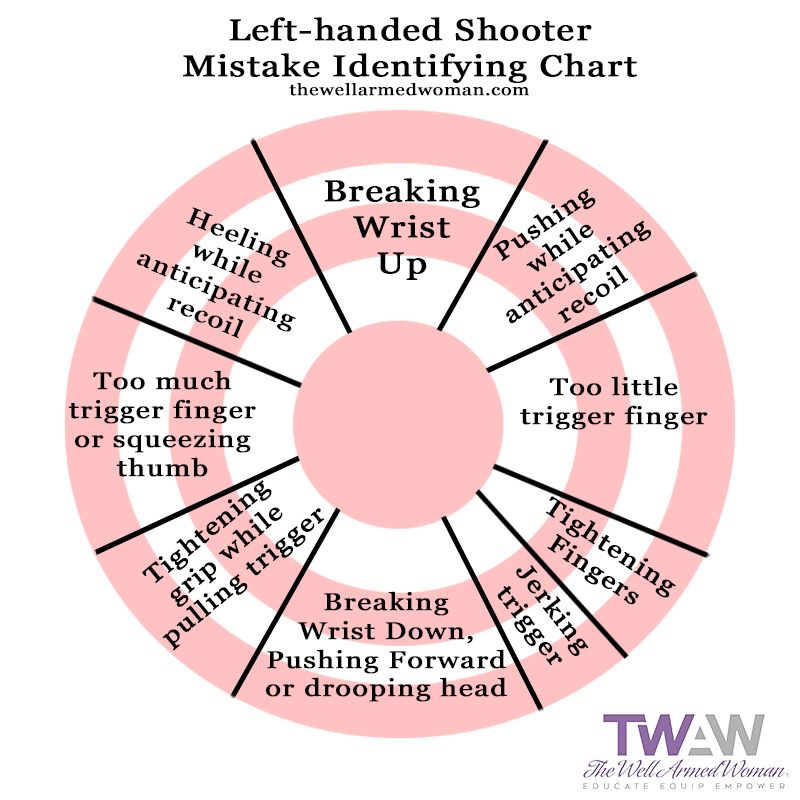
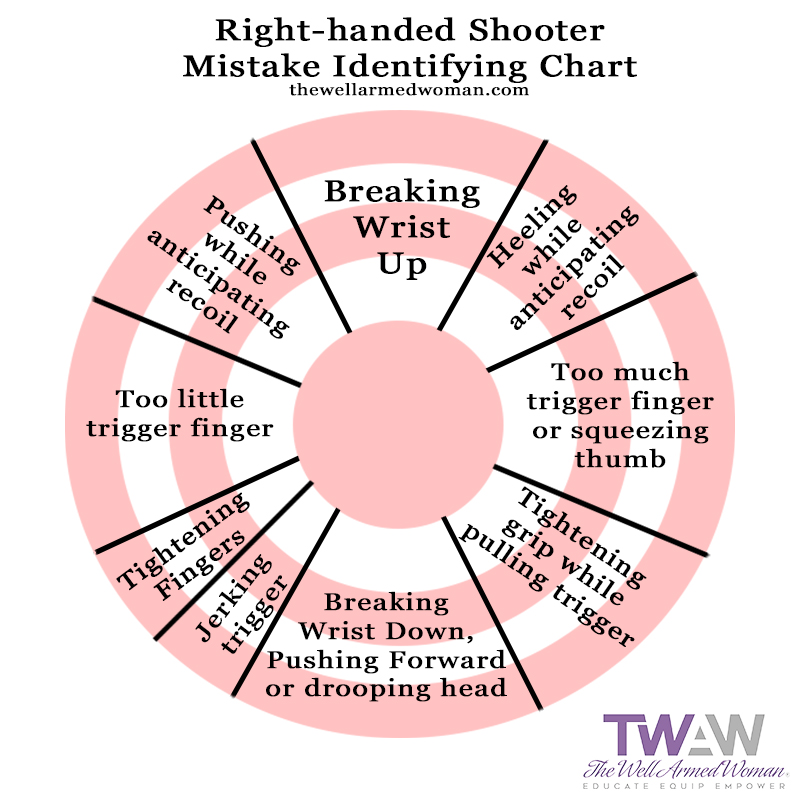
Aiming Your Shotgun
Shotguns have sighting systems just as a handgun. As with handguns, aiming a shotgun requires practice. You may be told ” You don’t need to aim a shotgun, just point it in the general direction and you can’t miss.” Although a shotgun shoots a shell full of pellets with a greater spread or spray, naturally, this can be tempting to believe. Your life however is worth better odds than that. Keep in mind, if you shoot your shotgun at a shorter distance, as in your home, the spread is quite small, again a reason to sight your shotgun effectively.

Shotguns are large and quite heavy, becoming comfortable lifting and sighting it will take practice as well as some physical strength.
As with all firearms, always keep the gun’s muzzle pointed in a safe direction down range. Never point a shotgun muzzle backward over your shoulder.
Practice lifting and mounting an unloaded shotgun to your face and shoulder. Make sure you stand erect. Do not lower your face to the gun or tilt your head. Lift the gun straight up using a short concise motion. Be sure to use both hands equally, as though they were connected.
Optical Sights
The most common optical sight is a scope, which usually magnifies whatever is viewed through it, and includes some kind of reticle or crosshair for aiming purposes. Other types of optical sights include red dot scopes (the dot color may vary, but “red dot” is often used generically) and holographic sights, which project an image onto a transparent screen.
Aiming Your Gun With Optical Sights
Aiming your gun with optical sights is the easiest kind of aiming there is, so we’ll talk about that first. Look through the scope or sight and position your head and the sight so you can see through it clearly. Ensure there’s no blackness around the perimeter of your viewing area (you might have to move your eye closer to the scope or farther away), and that the reticle (the thing you see in the optics; it may be crosshairs, single or multiple dots, an X, a circle, etc) is centered in your view.
In a conventional scope, you will usually see a cross formed of two lines; this is known as the crosshair. Your aiming point is the intersection of the hairs, which should lie in the center of the scope tube. If your aiming point is an electronically-projected dot, you may cover your target with the dot, or adjust your view so the target is positioned just above the dot.
If your aiming point is an X, use the center of the X for aiming, as you would do with a crosshair. If it’s a hollow circle, the center of the circle should be your aiming point.
Peep (or Ghost Ring) Sights
In most cases, peep sights are easier to use than open sights, because they require less thought. Look through the hole (or “peep”) in the rear sight, center the front sight in your view, and find your target. For most people, centering the front sight is automatically done without conscious thought, which allows one to simply look through the peep, place the front sight on target, and squeeze the trigger. The peep is a very fast and accurate type of sight.
Continue Learning How To Shoot A gun here: Making The Decision: Part 4 – How Do I Use A Gun?
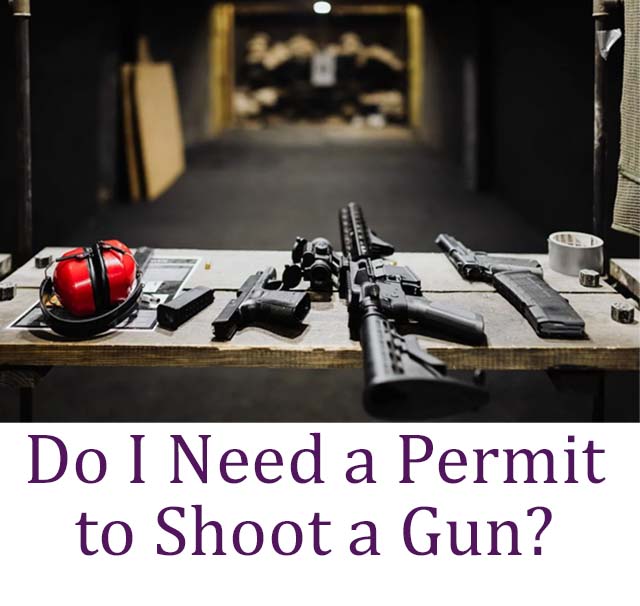
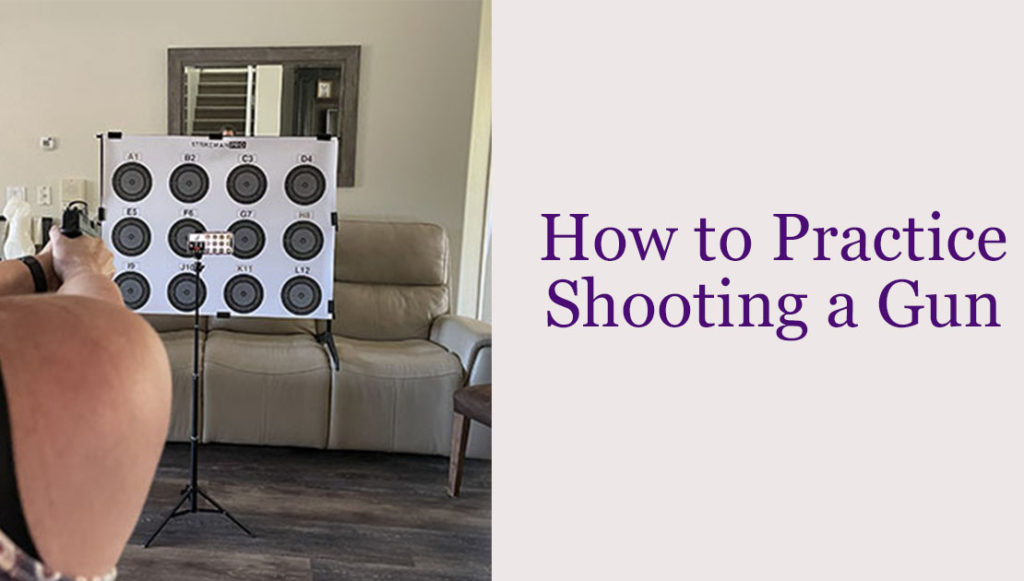
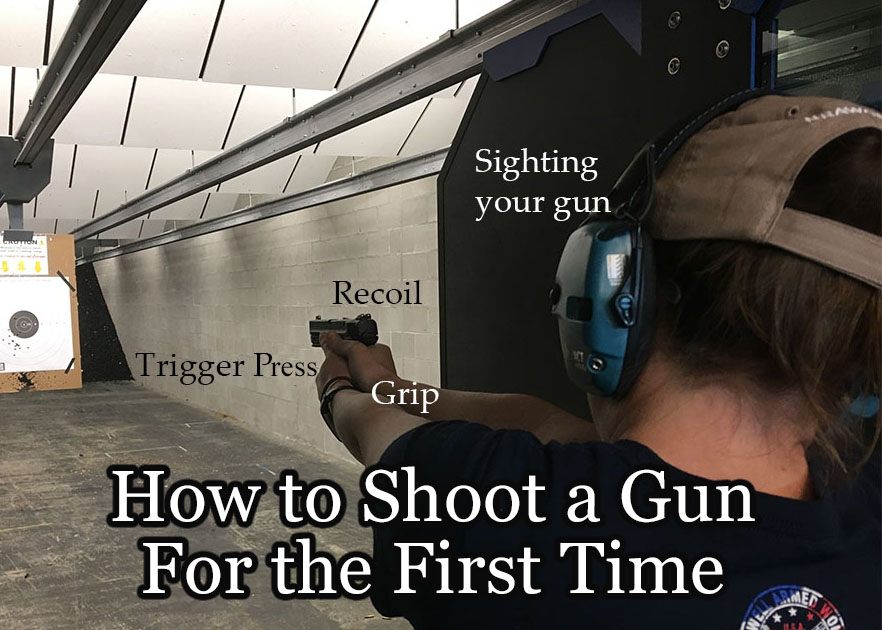
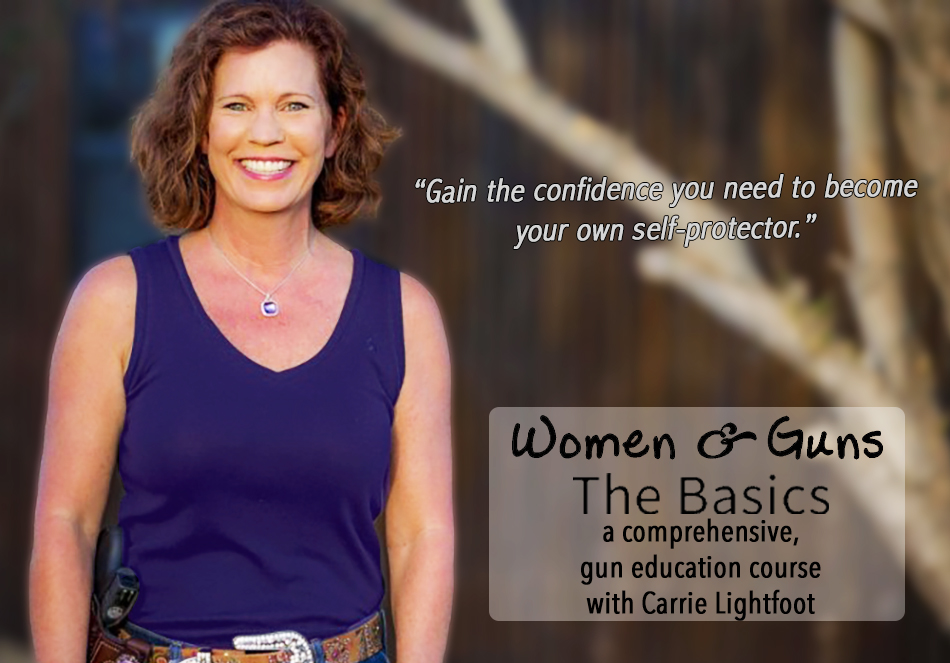
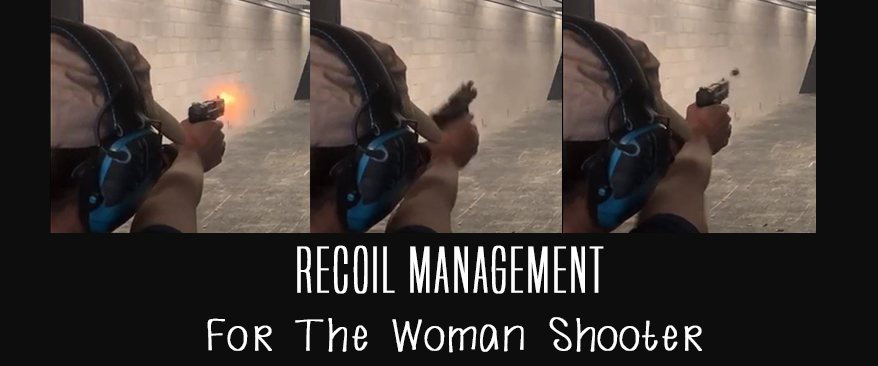
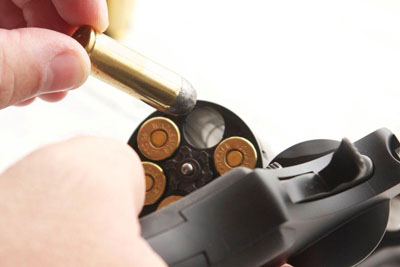
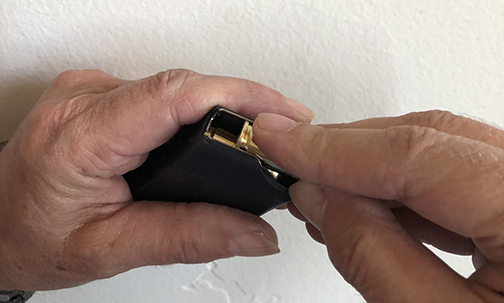
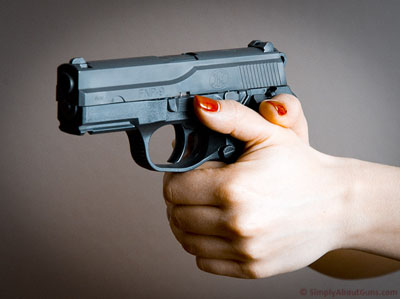
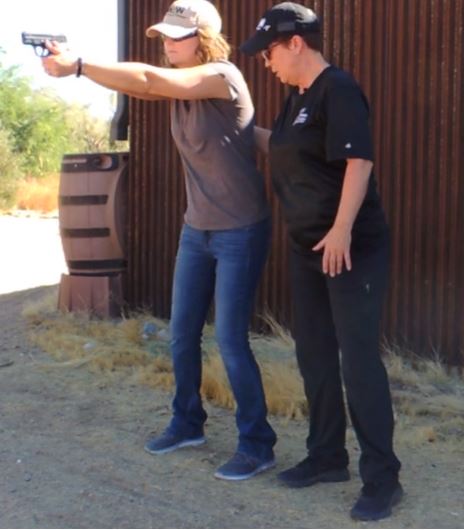

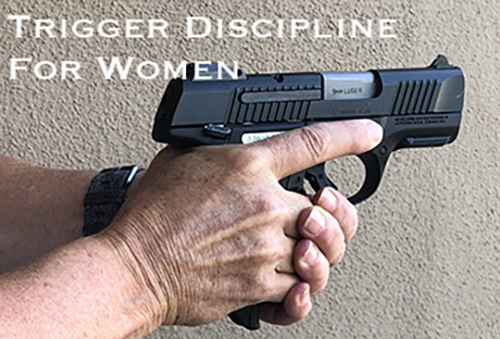
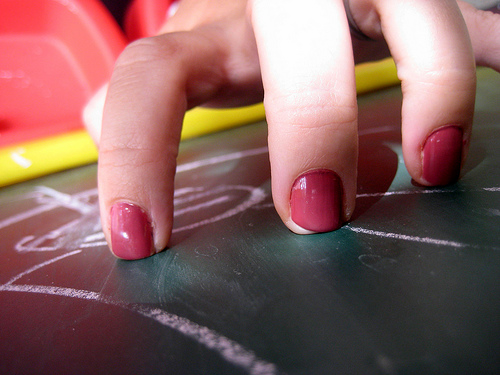
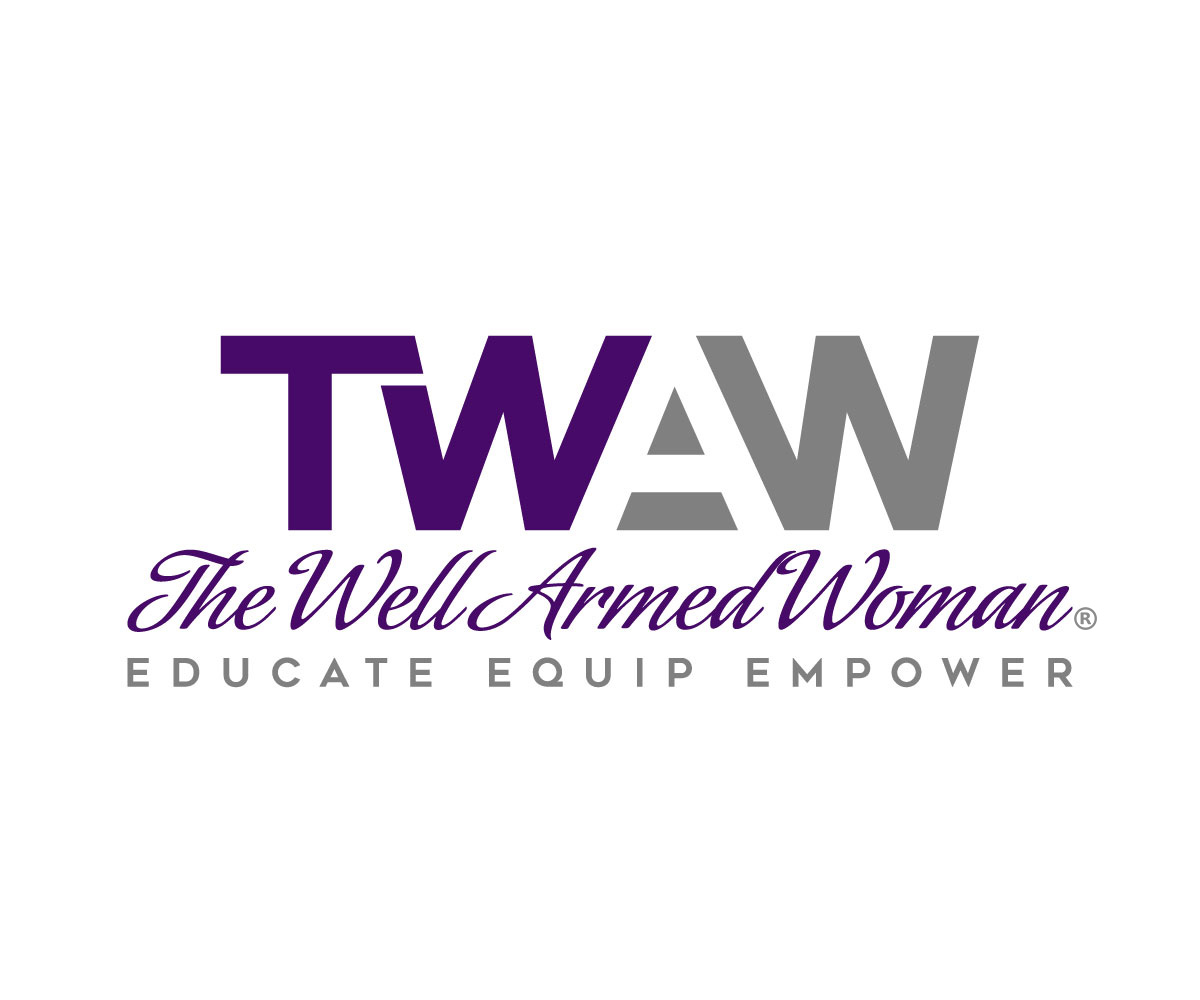
I am still new to shooting . I practice regularly and am still renting various 9mm guns. I find that my aim is off consistently with whatever gun I use.
I instinctively close my left eye to focus on something at a distance, I have done this all my life. My shot almost always hits about 6 inches to the left and usually
down a few inches too. Do other people close one eye or am I unusual? Could this be why I am off? If I leave both eyes open I feel like I am seeing 2 targets even though the sites are in focus.
I either use contact lenses or bifocal glasses. With the glasses I have to tilt my whole head up to focus on the sites.
Thank you for your website, I continue to learn so much. Donna Dowdall, Florida
I am fairly new to shooting also and I started out shooting with my non dominant eye closed but after I took a firearms training course I came to realize as my instructor said, in a high stress situation where I may need my pistol, I’m not going to take the time to close one eye and shoot. I found that by turning my head slightly towards my left shoulder (I am right eye dominant), keeping both eyes open, I am able to focus on my front sight fairly quickly and get my shots off accurately. It takes awhile to get used to shooting with both eyes open. Give it some time to get used to. Now, it actually feels weird for me to shut one eye and shoot. Practice with a dry fire system if you are able to. That helped me a lot!
I have a concealed weapons permit in loudoun county va, we will be moving to a different county which is Winchester va do I need to get a news CWP?
Hi Rebecca,
You will have to check with your new county laws to see if your current CWP will be valid.